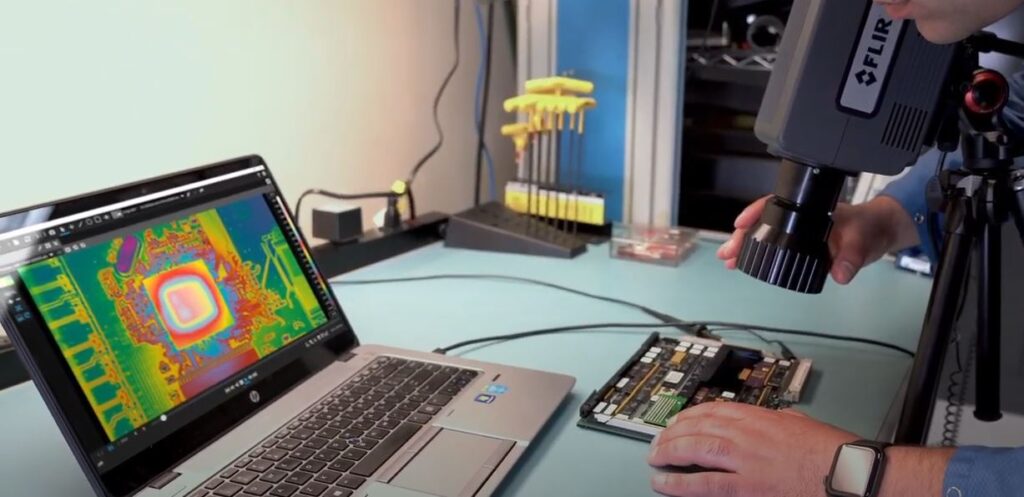 FLIR Research Studio software just got better than ever!
Continue reading →
FLIR Research Studio software just got better than ever!
Continue reading →Thermal Imaging Cameras
-
NEW FLIR Research Studio - Pro Edition Software - 90-Day Free Trial
 FLIR Research Studio software just got better than ever!
Continue reading →
FLIR Research Studio software just got better than ever!
Continue reading → -
8 Applications of Hikmicro’s M-series Thermal Cameras
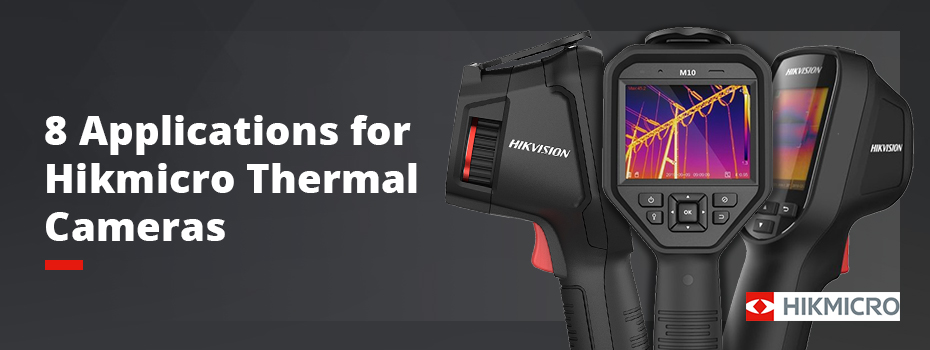 Please note: The M10 has been replaced for the M11.
Hikmicro is an industry-leading manufacturer of thermal cameras, detectors, cores, modules, and solutions. Their eclectic catalogue of products includes ecology, hunting, and outdoor thermal monoculars; first response/ security thermal solutions; and thermal cameras optimised for mechanical, building, and electrical applications. In this blog, we will be looking at Hikcmicro’s M-Series Handheld Thermal Cameras, particularly the M10 and M30, and their uses. These handheld thermal imaging cameras are extremely versatile and provide easy and effective solutions for automotive repair, building, mechanical, HVAC, PCB, electricity, oil, and metallurgy applications.
Continue reading →
Please note: The M10 has been replaced for the M11.
Hikmicro is an industry-leading manufacturer of thermal cameras, detectors, cores, modules, and solutions. Their eclectic catalogue of products includes ecology, hunting, and outdoor thermal monoculars; first response/ security thermal solutions; and thermal cameras optimised for mechanical, building, and electrical applications. In this blog, we will be looking at Hikcmicro’s M-Series Handheld Thermal Cameras, particularly the M10 and M30, and their uses. These handheld thermal imaging cameras are extremely versatile and provide easy and effective solutions for automotive repair, building, mechanical, HVAC, PCB, electricity, oil, and metallurgy applications.
Continue reading → -
An Introduction to HIKMICRO's Smartphone thermal cameras WEBINAR
HIKMICRO are about to launch their new generation mini smartphone thermals in the UK. Be one of the first to find out more about how these new handheld thermography products can help you in your day-to-day work! Continue reading →
Continue reading → -
Teledyne Merges with FLIR
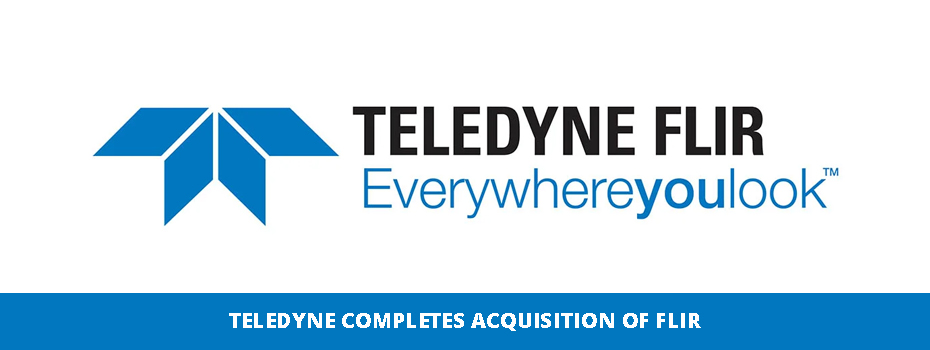 On the 14th May 2021, Teledyne Technologies Incorporated (Teledyne) completed its acquisition of FLIR Systems (FLIR) for an estimated $8.2 billion. FLIR will now trade under the name Teledyne FLIR.[1]
Continue reading →
On the 14th May 2021, Teledyne Technologies Incorporated (Teledyne) completed its acquisition of FLIR Systems (FLIR) for an estimated $8.2 billion. FLIR will now trade under the name Teledyne FLIR.[1]
Continue reading → -
6 Amazing Things You Didn't Know About Thermal Cameras
Please note this blog was originally published on the 1st May 2015. It was updated on the 1st June 2021 to include links to relevant thermal cameras. The thermal camera is a wonderful invention. However, the technology is surrounded by myths, legends, and misinformation that can make choosing a camera quite confusing. In this blog, we break down some of the most pervasive fallacies, and a few surprising truths, concerning thermal cameras. Continue reading → -
FREE FLIR Webinar Series
 Do you want to find out more about FLIR’s thermal cameras and how they can be used for condition monitoring applications?
Or, how can you use FLIR’s Thermal Studio software to interpret thermal images and create great looking detailed reports?
Continue reading →
Do you want to find out more about FLIR’s thermal cameras and how they can be used for condition monitoring applications?
Or, how can you use FLIR’s Thermal Studio software to interpret thermal images and create great looking detailed reports?
Continue reading → -
FLIR Scion Sale: Up to 30% Off Select Models
 Available between the 1st May 2021 and the 30th September 2021, FLIR is offering up to 30% off select Scion OTM and PTM Thermal Imaging Monoculars.
Continue reading →
Available between the 1st May 2021 and the 30th September 2021, FLIR is offering up to 30% off select Scion OTM and PTM Thermal Imaging Monoculars.
Continue reading → -
School Solves Plumbing Problem Using Testo 883 Thermal Camera
Read how Stultumshire Comprehensive School solved an unexpected plumbing problem using a Testo 883 Thermal Camera. -
FLIR’s Tips to Avoid the Top Three Home Inspection Mistakes
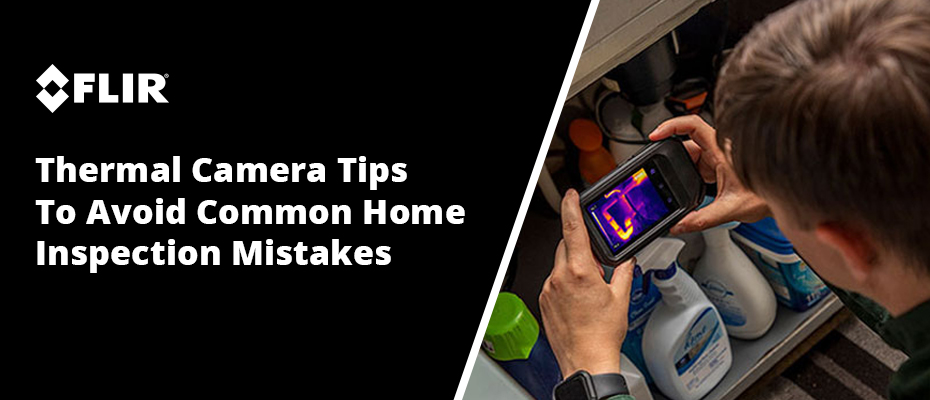 Thermal cameras, like FLIR’s E6-XT, E8-XT, E76, E96, T530, T540, and T560, make detecting hidden problems, such as leaking pipes, damp spots, missing insulation, and pests, quick and easy. That’s provided you know how to use them and how to interpret thermal images correctly. FLIR has identified the three biggest mistakes plumbers, builders, and electricians make when carrying out thermal inspections in homes, and has compiled a list of tips that can be implemented to avoid these errors. However, FLIR does stress that the best way to avoid common home inspection mistakes is to undertake a thermography course.[1]
Continue reading →
Thermal cameras, like FLIR’s E6-XT, E8-XT, E76, E96, T530, T540, and T560, make detecting hidden problems, such as leaking pipes, damp spots, missing insulation, and pests, quick and easy. That’s provided you know how to use them and how to interpret thermal images correctly. FLIR has identified the three biggest mistakes plumbers, builders, and electricians make when carrying out thermal inspections in homes, and has compiled a list of tips that can be implemented to avoid these errors. However, FLIR does stress that the best way to avoid common home inspection mistakes is to undertake a thermography course.[1]
Continue reading →


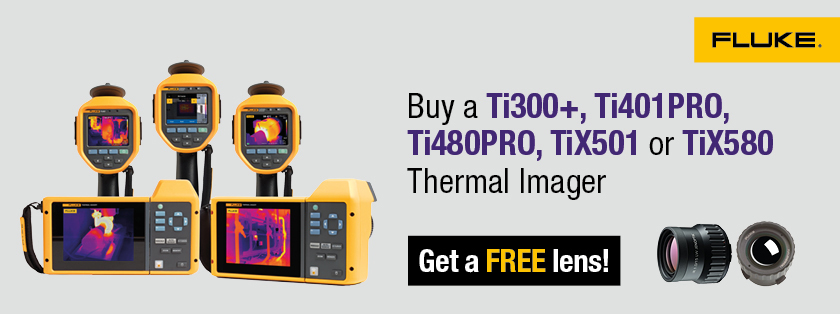 Claim a FREE 2x Telephoto Infrared Smart Lens or a Wide Angle Infrared Smart Lens when your buy a Fluke
Claim a FREE 2x Telephoto Infrared Smart Lens or a Wide Angle Infrared Smart Lens when your buy a Fluke 